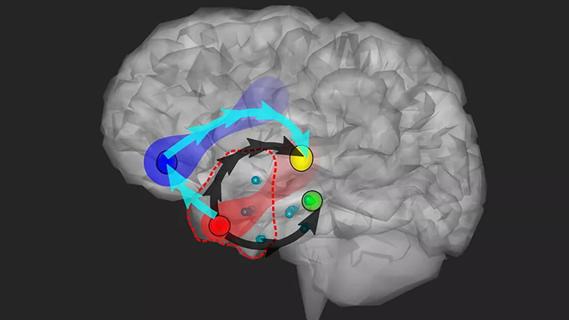Characterizing genetic architecture of clinical subtypes may accelerate targeted therapy

Identifying patterns of genetic variation of different clinical phenotypes of epilepsy can provide important insights into their underlying pathophysiology and ultimately lead to more accurate diagnosis and targeted treatments. Such efforts received a recent boost from the largest genome-wide association study (GWAS) of epilepsy ever conducted, by the International League Against Epilepsy (ILAE) Consortium on Complex Epilepsies, the governing body for epilepsy societies worldwide. The study, published in Nature Genetics (2023;55[9]:1471-1482), identified 26 epilepsy risk loci, 16 of which had never been reported previously.
Advertisement
Cleveland Clinic is a non-profit academic medical center. Advertising on our site helps support our mission. We do not endorse non-Cleveland Clinic products or services. Policy
“These results represent a real leap in understanding of the genetics of epilepsy,” says Imad Najm, MD, Director of Cleveland Clinic’s Epilepsy Center and a co-author of the study. “Identification of individual genes and specific genetic architectures highly associated with epilepsy provides us with targets for diagnosis and treatment, and can rapidly lead to new therapies.”
Five other Cleveland Clinic staff were part of the ILAE group involved in this effort, the third GWAS analysis conducted by the ILAE. The previous study, published in 2018, used a population about half the size of the one in the current study.
Despite the fact that more than 25 antiseizure medications are approved in the U.S., most sources estimate that only 60% to 65% of patients have seizure control. In fact, a 2018 study by the U.S. Centers for Disease Control and Prevention using 2013 and 2015 survey data put that figure at only 44%.
“With the variability in epilepsy phenotypes and causes, a more targeted approach to therapy is greatly needed,” Dr. Najm says. “Gaining a better understanding of underlying genetics can lead to personalized approaches that are more likely to succeed for individual patients.”
The GWAS meta-analysis was conducted on blood samples from 29,944 people with epilepsy from multiple tertiary referral centers and 52,538 controls; among the epilepsy cases, 16,384 were classified as focal epilepsy and 7,407 as generalized epilepsy. Data were obtained from the ILAE, the Epi25 collaborative and additional cohorts.
Advertisement
Nearly 5 million single nucleotide polymorphisms (SNPs) were tested, and 10 post-GWAS methods were used to analyze and compare controls with the entire epilepsy cohort, focal and generalized epilepsies, and seven epilepsy subtypes.
Major findings were as follows:
Dr. Najm highlights several important messages from the study, outlined below.
Generalized epilepsy has a strong genetic component from both common and rare genetic variants. Juvenile absence epilepsy was identified as having the highest contribution from genetic factors, with 90% of liability attributable to common variants.
Genetic impacts appear weaker in focal epilepsies. In contrast, common variants provided a minor contribution to focal epilepsies, with none reaching genome-wide significance. “Focal epilepsies are much more heterogeneous in origin,” Dr. Najm explains. Evidence is also emerging that noninherited, somatic mutations play a significant role in focal epilepsies.
Identified monogenic epilepsy genes and variant signals have important implications for therapy. Implicated monogenic epilepsy genes include CACNA2D2, RYR, SCN8A and CHRM3, which affect specific cell receptors and ion channels. “Medications that target these functions that are already approved for different conditions could potentially be repurposed for epilepsy treatment,” Dr. Najm says. “They may offer specific and selective new therapy options that could quickly be made available.”
Advertisement
Based on signals from GWAS analysis, the investigators systematically prioritized existing drugs according to their likelihood of efficacy against generalized epilepsy and identified the top 20 that are currently licensed for other conditions.
Products of epilepsy gene variants were found in inhibitory and excitatory neurons in the brain, but not in other brain cells. “This is in contrast to other neurologic conditions and has important implications for the role of synaptic processes in epilepsy,” Dr. Najm explains. “We know that the brain, unlike the heart, is not designed to fire in synchrony, and when it does ― possibly due to inappropriate inhibition or excitation ― a seizure ensues.” He adds that synaptic vesicle transport is currently a target of some antiseizure medications and a likely useful focus of new therapy development.
Dr. Najm notes that despite the large sample size of this study, more GWAS analyses are warranted. A limitation of the current study was the large number of institutions worldwide that provided the data, making it likely that specific criteria for distinguishing clinical subtypes varied, ultimately blurring genetic distinctions. He calls for follow-up high-end studies with very well-characterized epilepsy patients to optimize clarity in findings.
He adds that more than 90% of the subjects with epilepsy were of European ancestry, which may limit how broadly the findings apply and underscores the need to better represent populations from around the world.
Advertisement
Most importantly, Dr. Najm says, this study should be used to inform new research in drug development. “This study has generated a wealth of information on epilepsy-implicated genes, many of which play an uncertain role in the disorder,” he observes. “With the help of pharmaceutical companies, we need to conduct investigations into repurposing currently approved medications and creating new molecules with the goal of developing very targeted therapies for different subtypes of epilepsy.”
Advertisement
Advertisement

Patients with epilepsy should be screened for sleep issues

Sustained remission of seizures and neurocognitive dysfunction subsequently maintained with cannabidiol monotherapy

Model relies on analysis of peri-ictal scalp EEG data, promising wide applicability

Investigational gene approaches offer hope for a therapeutically challenging condition

Study combines intracranial electrophysiology and SPECT to elucidate the role of hypoperfusion

Data-driven methods may improve seizure localization and refine surgical decision-making

Pre-retirement reflections from a pioneering clinician, researcher and educator

Multivariable models help estimate risk of postoperative declines in cognition and mood